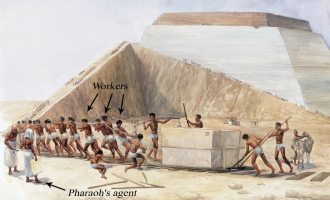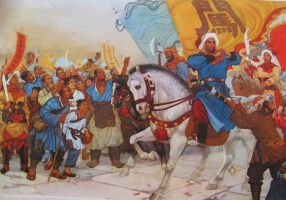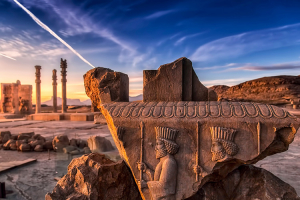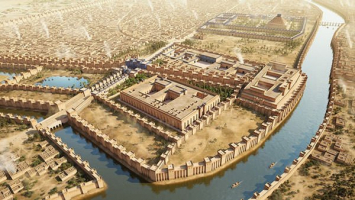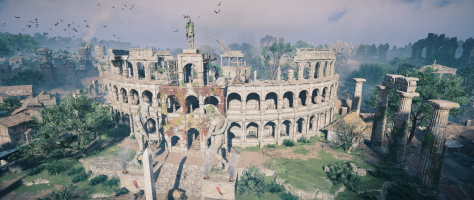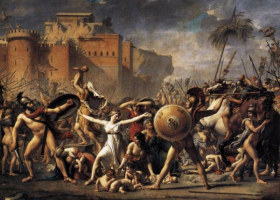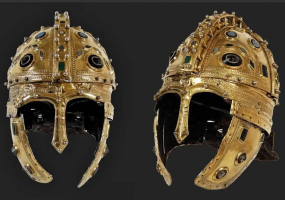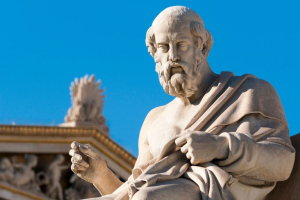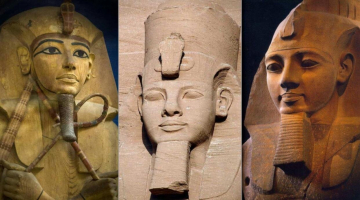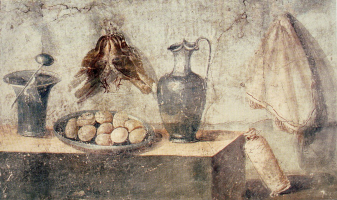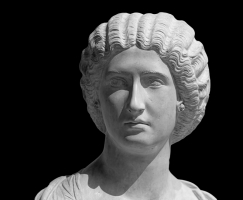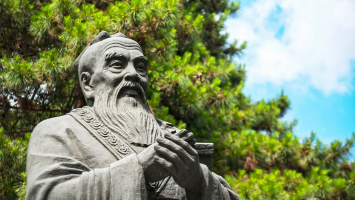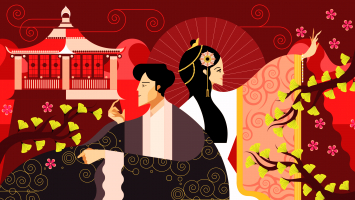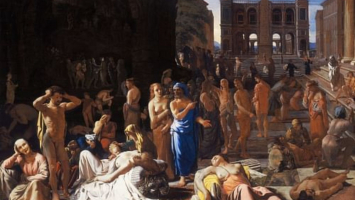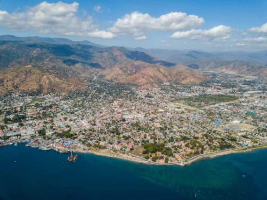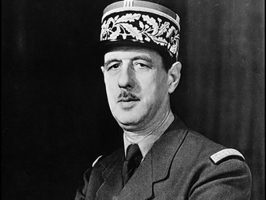Top 11 Most Important Events in Ancient Rome
In modern historiography, ancient Rome refers to Roman civilization from the 8th century BC establishment of Rome until the 5th century AD collapse of the ... read more...Western Roman Empire. It includes the Roman Kingdom (753-509 BC), Roman Republic (509-27 BC), and Roman Empire (27 BC-476 AD) until the western empire's fall. Here are the 11 most important events in Ancient Rome.
-
One of the most important events in Ancient Rome is the foundation of Rome on 21 April 753 BC. The city of Rome was founded on April 21, 753 BC, on the banks of the Tiber in central Italy, by the twin brothers Romulus and Remus, who sprang from the Trojan prince Aeneas and were grandsons of the Latin King Numitor of Alba Longa. Amulius, King Numitor's brother, deposed him while Rhea Silvia, Numitor's daughter, gave birth to the twins. The twins were regarded as half-divine since Rhea Silvia had been raped and impregnated by Mars, the Roman god of battle.
The twins then established their own city, but Romulus murdered Remus in a fight over the location of the Roman Kingdom, however, some stories claim the quarrel was over who would rule or give his name to the city. Romulus was the inspiration for the city's name. In order to attract visitors, Rome became a haven for the poor, exiled, and undesired. This created an issue because Rome grew to have a large male population but no women. Romulus went to neighboring towns and tribes to gain marriage privileges, but he was turned down since Rome was so full of undesirables. According to legend, the Latins invited the Sabines to a feast and took their unmarried maidens, resulting in the Latins' fusion with the Sabines.
According to another legend, reported by Greek historian Dionysius of Halicarnassus, Prince Aeneas led a company of Trojans on a sea trip to find a new Troy after the first was destroyed at the end of the Trojan War. They arrived on the shores of the Tiber River after a long journey in heavy waves. The men wanted to return to the sea not long after they arrived, but the women who were traveling with them did not. One woman, Roma, proposed that the women burn the ships at sea to prevent them from departing. The men were first irritated with Roma, but they quickly realized that they were in the perfect location to settle. They called the town after the woman who set fire to their ships.
This mythology is related by the Roman poet Virgil in his classical epic poem the Aeneid, in which the Trojan prince Aeneas is destined by the gods to create a new Troy. The women in the epic likewise refuse to return to the sea, but they are not abandoned on the Tiber. After arriving in Italy, Aeneas, who desired to marry Lavinia, was obliged to fight her former lover, Turnus. According to the poem, Aeneas was the ancestor of the Alban rulers, and consequently, Romulus, the founder of Rome, was his descendant.
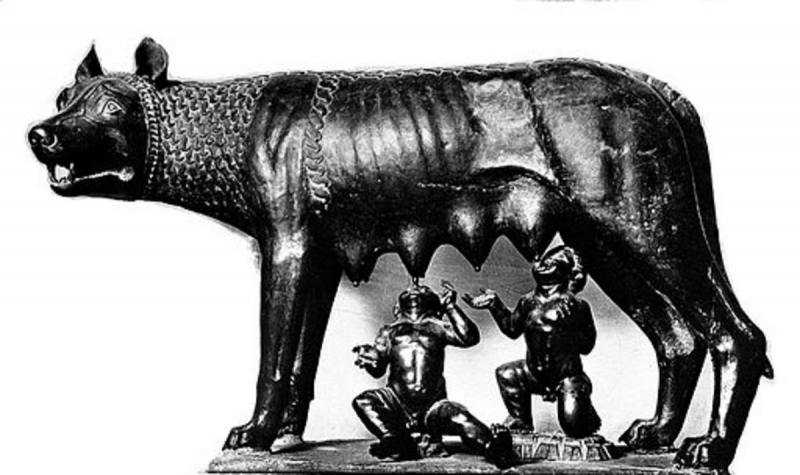
Romulus and Remus: The Founding Myth of the City of Rome -owlcation.com 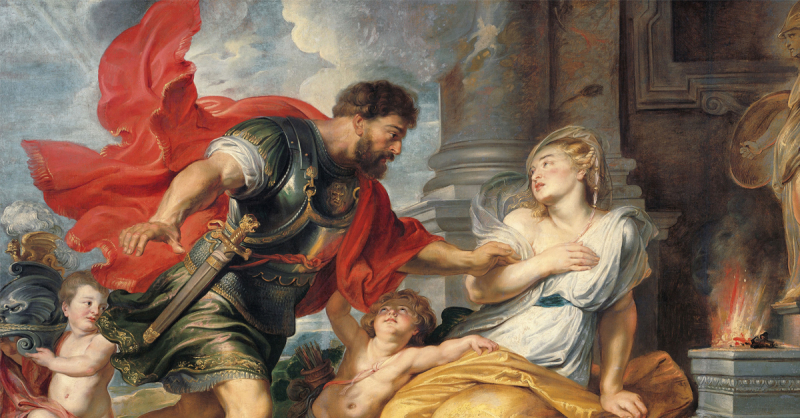
Prince Aeneas -wrldhistry.com -
The Roman Kingdom (also known as the Roman monarchy or the royal period of ancient Rome) was the first time in Roman history when rulers ruled the city and its area. According to oral histories, the Roman Kingdom began with the formation of towns surrounding the Palatine Hill along the Tiber River in central Italy around 753 BC and ended with the fall of the kings and the establishment of the Republic in 509 BC.
The kings (save Romulus, who held office by virtue of being the city's founder, according to legend) were all elected by the people of Rome to serve for life, with none depending on military power to achieve or retain the throne. The lictors (attendants or servants) brandishing the symbolic fasces bearing axes, the right to sit upon a curule seat, the purple toga picta, scarlet shoes, and a white diadem around the head were the symbols of the kings of Rome. The purple toga picta was the most important of these symbols.
Little is known about the kingdom's history because no records or inscriptions from the reign of the kings have survived. The stories published throughout the Republic and Empire are regarded to be mostly based on oral tradition. In central Italy, the location of the formation of the Roman Kingdom (and later Republic and Empire) featured a ford where one might cross the Tiber. The Palatine Hill and its neighboring hills afforded easily defendable positions in the vast fertile plain. Each of these characteristics led to the city's success.
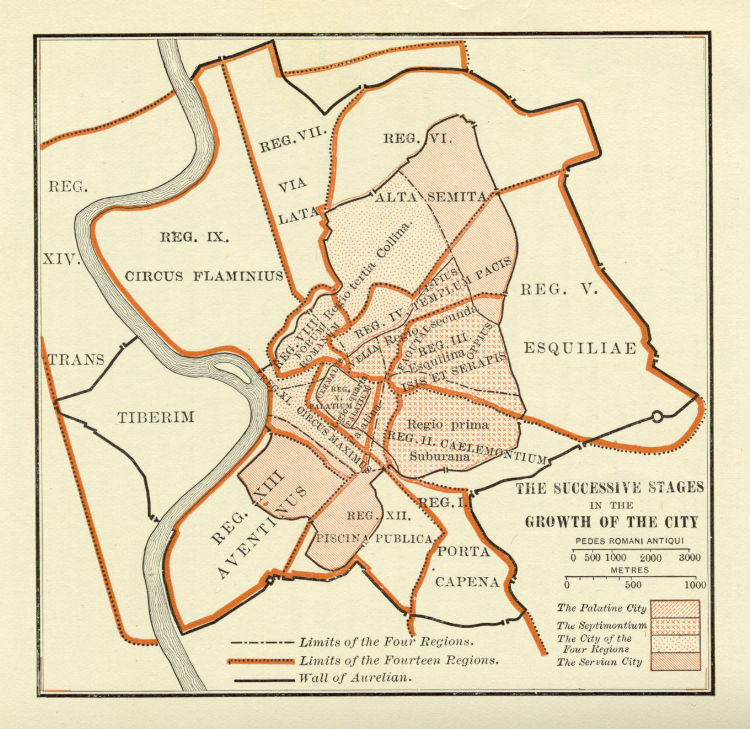
The ancient quarters of Rome -en.wikipedia.org 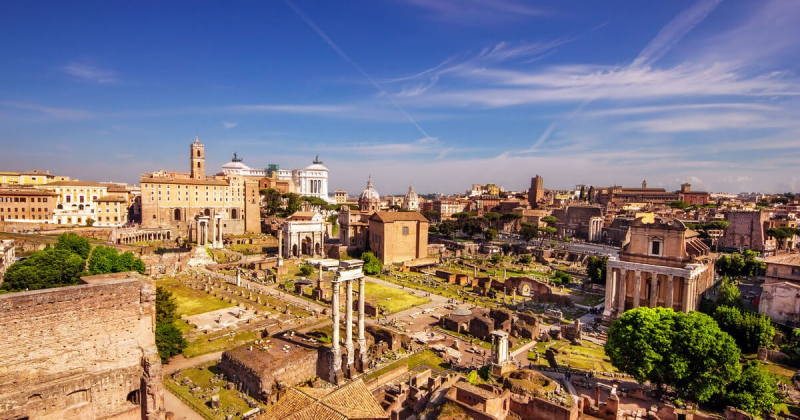
The Palatine Hill -througheternity.com -
The Roman Republic was a polity of classical Roman civilization that was controlled by the Roman people's public representation. From the destruction of the Roman Kingdom (traditionally dated to 509 BC) until the founding of the Roman Empire in 27 BC, Rome's influence swiftly expanded throughout this period from the city's immediate surrounds to rule over the whole Mediterranean world.
The Roman Republic has established around 509 BC, according to tradition and later writers such as Livy, when the last of Rome's seven kings, Tarquin the Proud, was deposed by Lucius Junius Brutus and a system based on annually elected magistrates and various representative assemblies was established. A constitution establishes a system of checks and balances as well as a separation of powers. The two consuls were the most powerful magistrates, wielding executive authority such as imperium, or military command. The consuls had to collaborate with the Senate, which began as an advisory council of the leading nobility, or patricians but increased in size and authority through time.
Other Republic magistrates include tribunes, quaestors, aediles, praetors, and censors. Originally reserved for patricians, magistracies were subsequently opened to commoners or plebeians. The Republican voting assemblies featured the comitia centuriata (centuriate assembly), which voted on war and peace issues and elected men to the most significant positions, and the comitia tributa (tribe assembly), which elected men to less important positions.
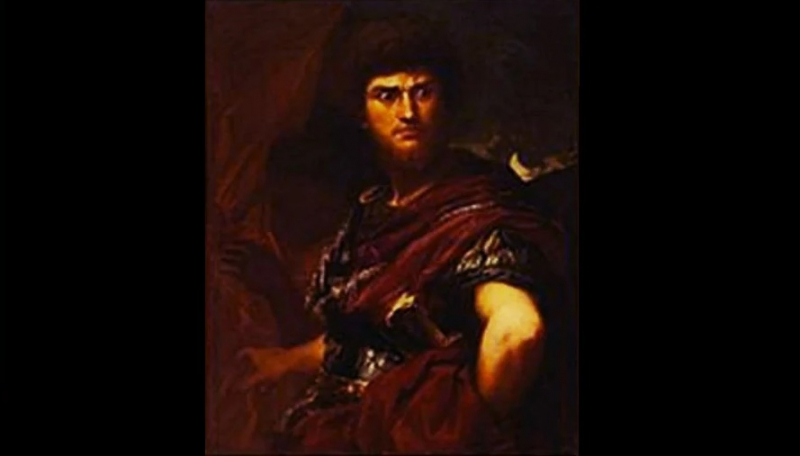
Tarquin the Proud -headstuff.org 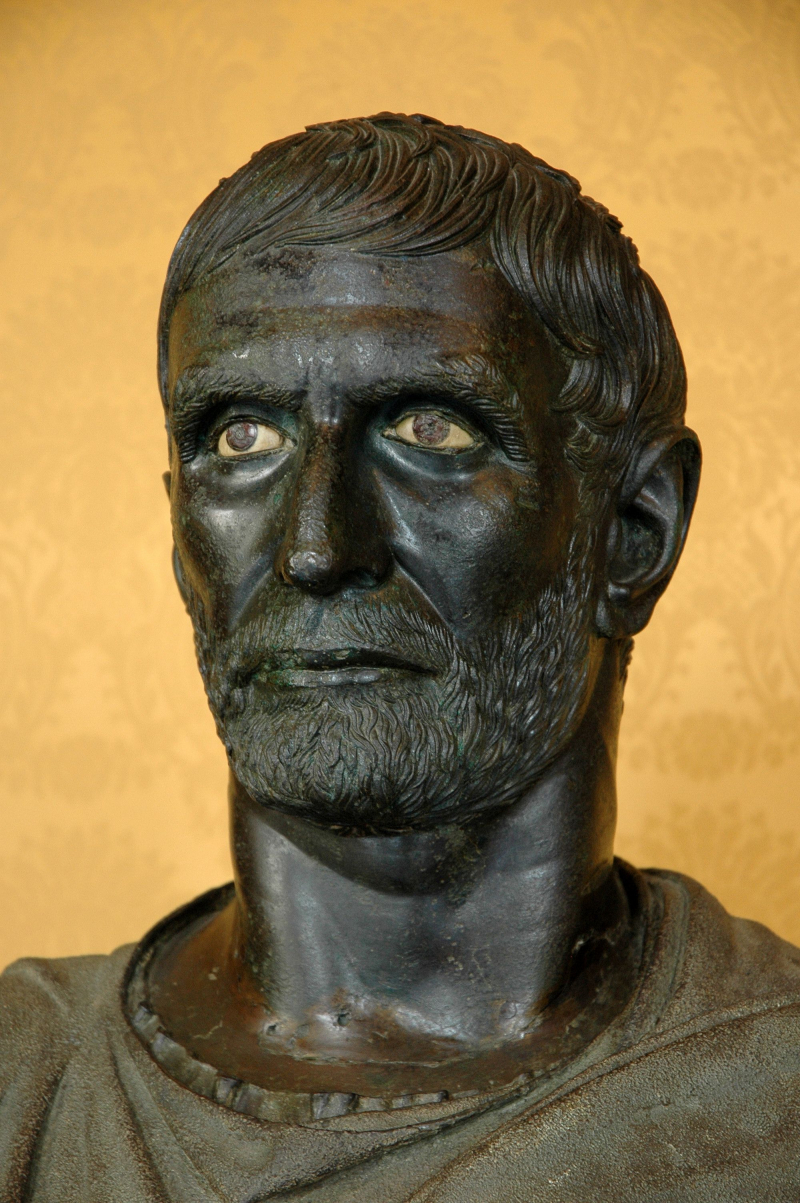
Lucius Junius Brutus -thoughtco.com -
The Gauls had attacked Rome in the 4th century BC, and they had now extended their power in the Italian peninsula beyond the Po Valley and through Etruria. A Gallic army led by tribe chieftain Brennus encountered the Romans on the banks of the Allia River, ten miles north of Rome, on July 16, 390 BC. The Gauls marched to Rome after Brennus beat the Romans. The majority of Romans had evacuated the city, but some had fortified themselves atop Capitoline Hill for a last struggle. The Gauls robbed and destroyed the city before seizing Capitoline Hill. Seven months passed during the siege. The Gauls then decided to make peace with the Romans in exchange for 1000 pounds of gold. The Roman supervising the weighing observed that the Gauls were using counterfeit scales, according to subsequent mythology. The Romans then armed themselves and defeated the Gauls. Their victorious general Camillus remarked, "With iron, not with gold, Rome buys her freedom."
Other peoples on the Italian peninsula, especially the Etruscans, were gradually subdued by the Romans. The last danger to Roman sovereignty in Italy came in 281 BC, when Tarentum, a large Greek colony, enlisted the assistance of Pyrrhus of Epirus, but this effort also failed. The Romans established lasting authority over the part of Italy they had conquered by establishing Roman colonies in crucial regions.
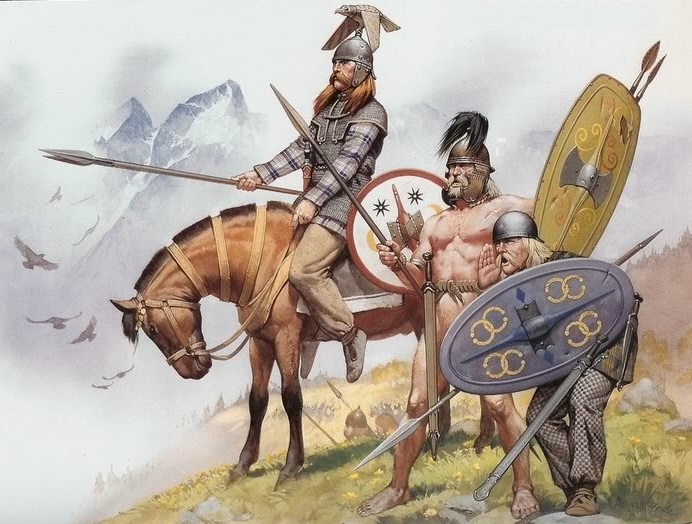
ludwigheinrichdyck.wordpress.com 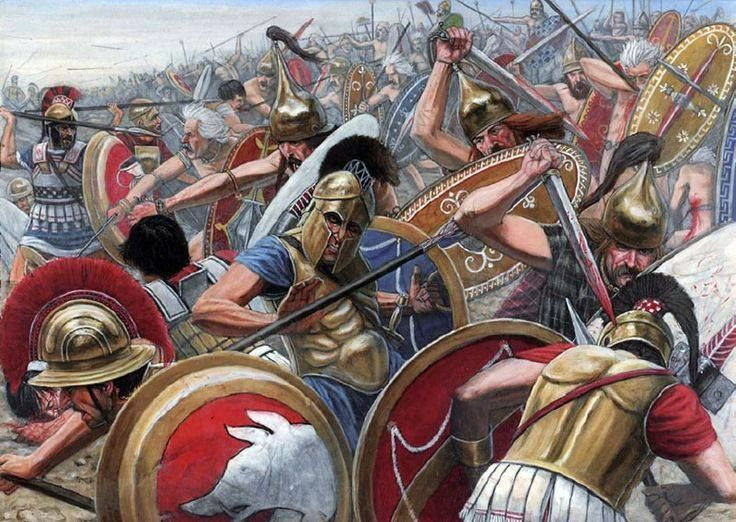
ludwigheinrichdyck.wordpress.com -
One of the most important events in Ancient Rome is The Punic Wars. The Punic Wars were a series of wars conducted between Rome and Carthage between 264 and 146 BC. In 264 BC, the First Punic War erupted on the island of Sicily. The Ancient Greek historian Polybius called it "the longest and most bitterly contested war in history." The action, which was mostly naval in nature, took place primarily in the waters surrounding Sicily in the Mediterranean. The battle arose as a result of Rome's imperial ambitions conflicting with Carthage's ownership claims to the island of Sicily.
Carthage was the leading force in the western Mediterranean at the time, with a vast maritime empire; Rome, on the other hand, was a fast developing state with a great army but a weak navy. The war lasted 23 years and resulted in significant material and human losses on both sides; the Carthaginians were eventually vanquished by the Romans in 241 BC. Carthage paid enormous war reparations to Rome under the conditions of the peace treaty, and Sicily fell under Roman rule, becoming the first Roman province. The conquest of Sicily cemented Rome's standing as a superpower in the Mediterranean and throughout the world. The war's aftermath also provoked a large but ultimately failed, insurrection and uprising within the Carthaginian Empire known as the Mercenary War.
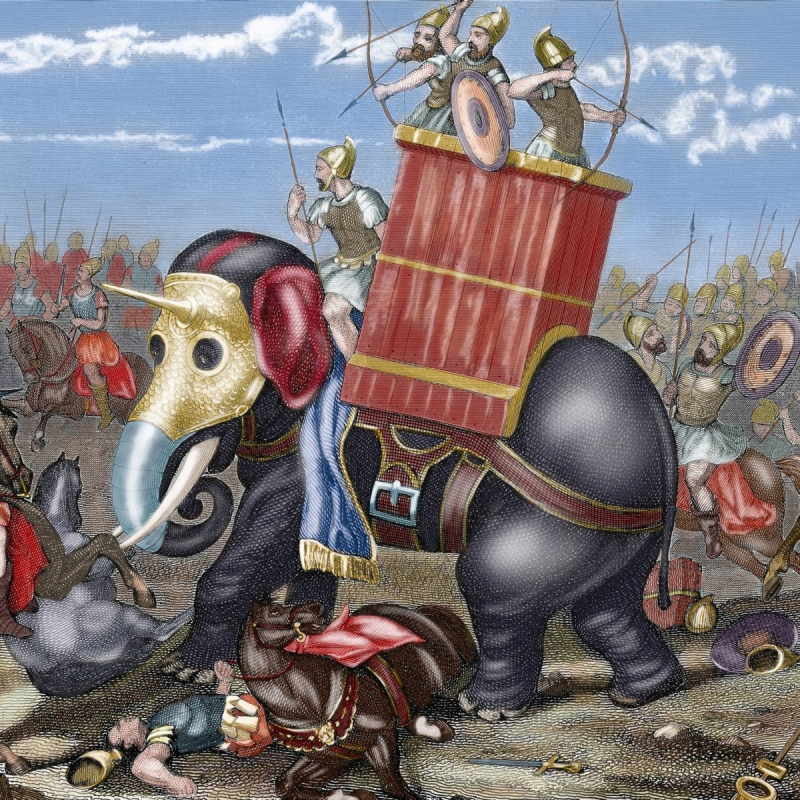
history.com 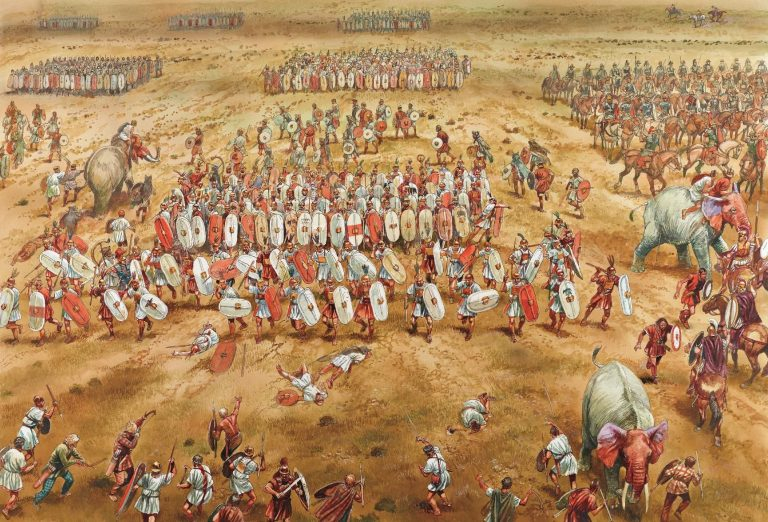
brewminate.com -
Another important event in Ancient Rome is the Hellenisation of Rome. The Romans became the dominating population of the Mediterranean Sea after defeating the Macedonian and Seleucid Empires in the second century BC. The conquering of the Hellenistic kingdoms brought the Roman and Greek civilizations closer together, and the Roman aristocracy, which had previously been rural, became opulent and cosmopolitan. In military terms, Rome had a consolidated empire with no major opponents at the time.
Internal turmoil resulted from foreign dominance. Senators became wealthy at the expense of the provinces; soldiers, who were mostly small-scale farmers, were away from home for longer periods of time and were unable to maintain their land; and the increased reliance on foreign slaves and the expansion of latifundia reduced the availability of paid work.
War booty, mercantilism in the new provinces, and tax farming generated new economic opportunities for the wealthy, resulting in the formation of a new class of merchants known as equestrians. The lex Claudia prohibited Senate members from engaging in business, thus while equestrians may potentially join the Senate, their political power was severely limited. The Senate squabbled incessantly, repeatedly blocking vital land reforms and refusing to give the equestrian class a greater say in government.
Violent gangs of the urban unemployed, controlled by competing Senators, used violence to scare the voter. The Gracchi brothers, a pair of tribunes who attempted to establish land reform legislation that would transfer the large patrician landholdings among the plebeians, brought the matter to a climax in the late 2nd century BC. Both brothers were assassinated, and the Senate implemented measures to undo the Gracchi brothers' actions. This resulted in a widening schism between the plebeian and equestrian classes.
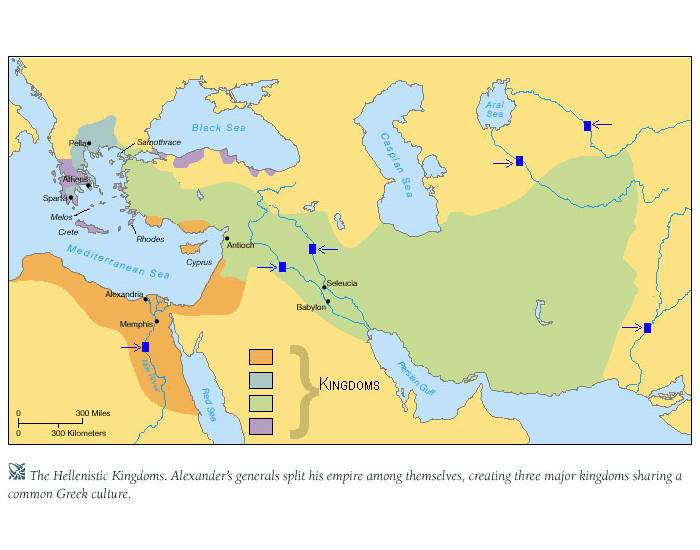
Hellenistic kingdoms -purposegames.com 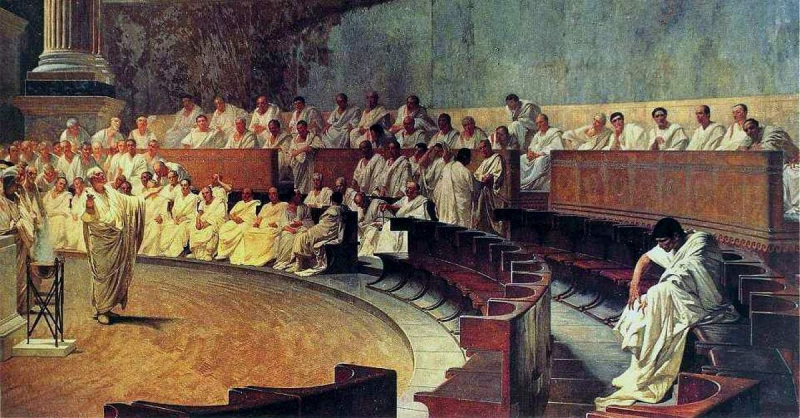
the Roman Senate -worldhistory.org -
The most important event in Ancient Rome is Pompey in the East. Although less widely known than Caesar's conquest of Gaul (58-51 BC), Pompey's exploits in the eastern Mediterranean were more important in Rome's expansion. Gnaeus Pompeius Magnus, also known as Pompey or Pompey the Great in English, was a prominent Roman general and statesman. He was instrumental in transforming Rome from a republic to an empire. He was a disciple of Roman general Sulla and a political ally and later adversary of Julius Caesar.
Pompey first ventured east in 67 BC as part of his battle against pirates infesting the Mediterranean. After crushing the pirates in three months, Pompey succeeded in command against Rome's long-time foe, Mithradates VI of Pontus, in 66 BC. Pompey, once again victorious, became the first Roman to march an army to the Euphrates River.
With Tigranes as a friend and ally, Rome's protectorate network extended as far east as the Black Sea and the Caucasus. Plutarch lists 20,000 talents in gold and silver added to the treasury, and the annual rise in taxes to the public treasury rose from 50 million to 85 million drachmas. Because of his administrative genius, his dispositions remained virtually intact until the fall of Rome.
Pompey led the operations from 65 to 62 B.C.E., and Rome firmly established authority over much of Asia. He imposed on the rulers of the new eastern provinces an overall settlement that took into account the physical and political issues involved in establishing Rome's new eastern frontier. Pompey returned to Rome and claimed to have fought against twenty-two monarchs in the East.
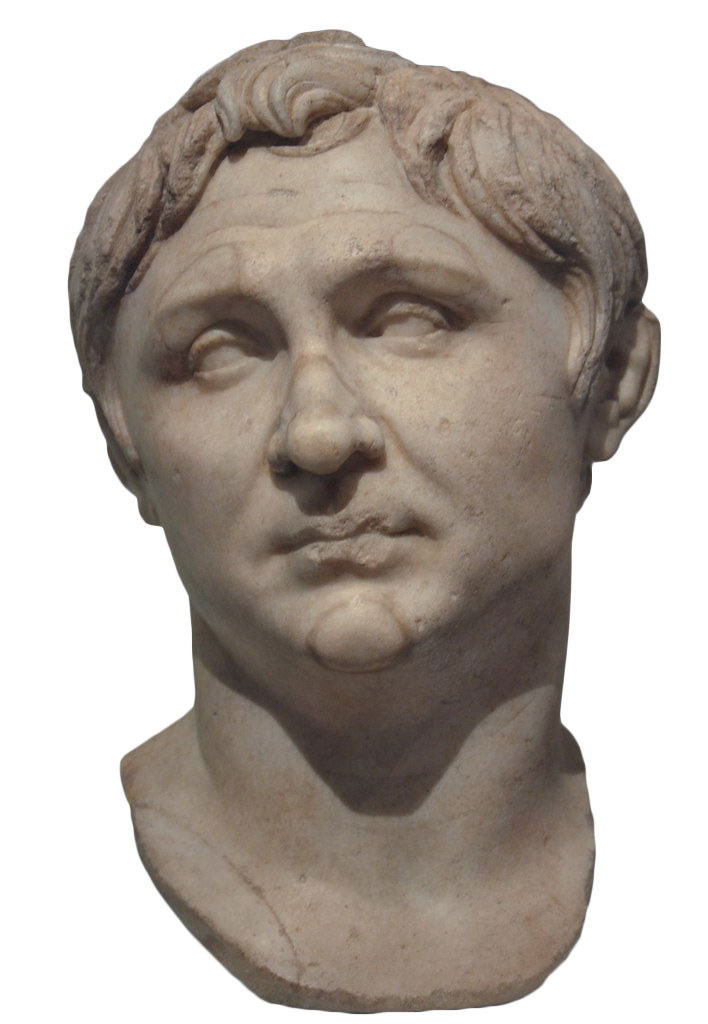
Pompey -roman-empire.net 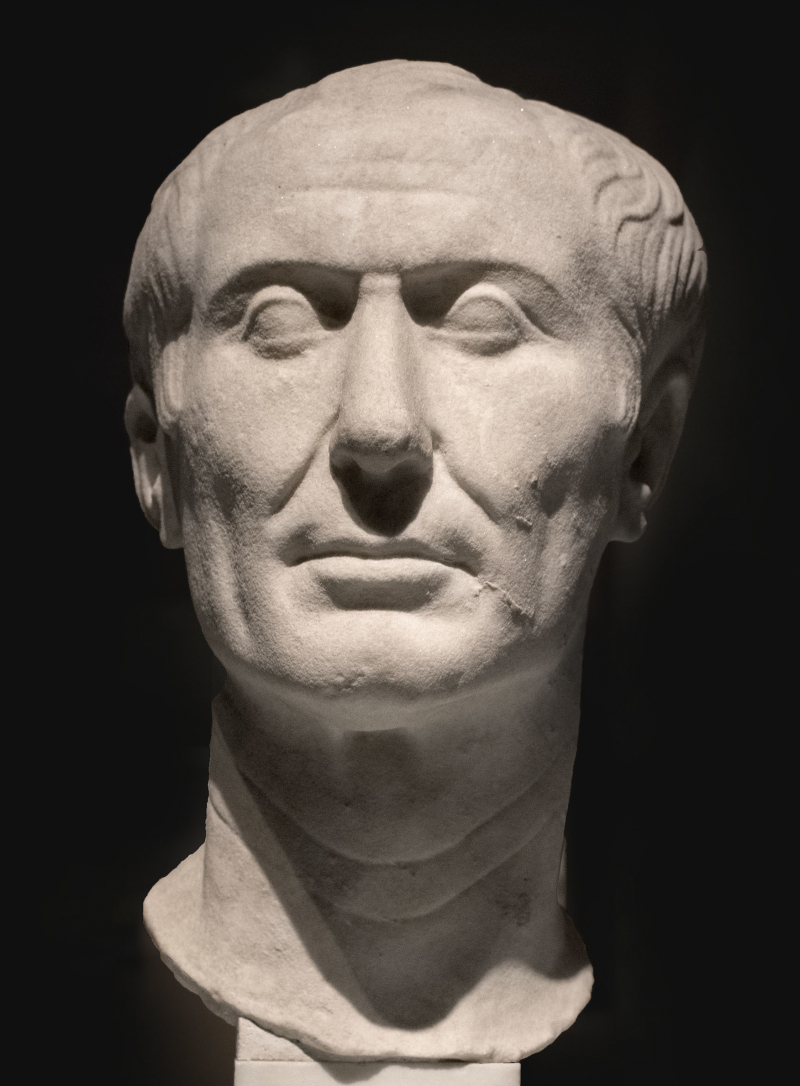
Julius Caesar -vi.wikipedia.org -
One of the most important events in Ancient Rome is the establishment of the Roman Empire. The Roman Empire was ancient Rome's post-Republican period. It was a state with extensive territorial holdings in Europe, North Africa, and Western Asia surrounding the Mediterranean Sea, controlled by emperors. It was principate from the accession of Caesar Augustus as the first Roman emperor through the military anarchy of the third century, with Italy as the metropole of its provinces and Rome as its single capital. Later, the Empire was ruled by a number of emperors who shared power with the Western and Eastern Roman Empires.
Rome remained the nominal capital of both parts until AD 476 when the imperial insignia were transferred to Constantinople following the invasion of Ravenna by Odoacer's Germanic barbarians and the consequent deposition of Romulus Augustulus. The acceptance of Christianity as the Roman Empire's state church in AD 380, followed by the fall of the Western Roman Empire to Germanic kings, is traditionally seen as the end of classical antiquity and the beginning of the Middle Ages. Historians refer to the medieval Roman Empire that survived in the Eastern provinces as the Byzantine Empire due to these events and the gradual Hellenization of the Eastern Roman Empire.
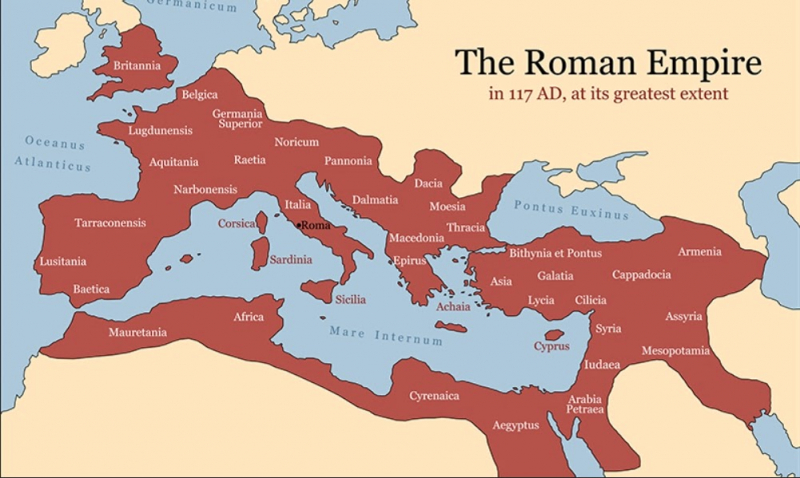
The Roman Empire -geologyinmotion.com 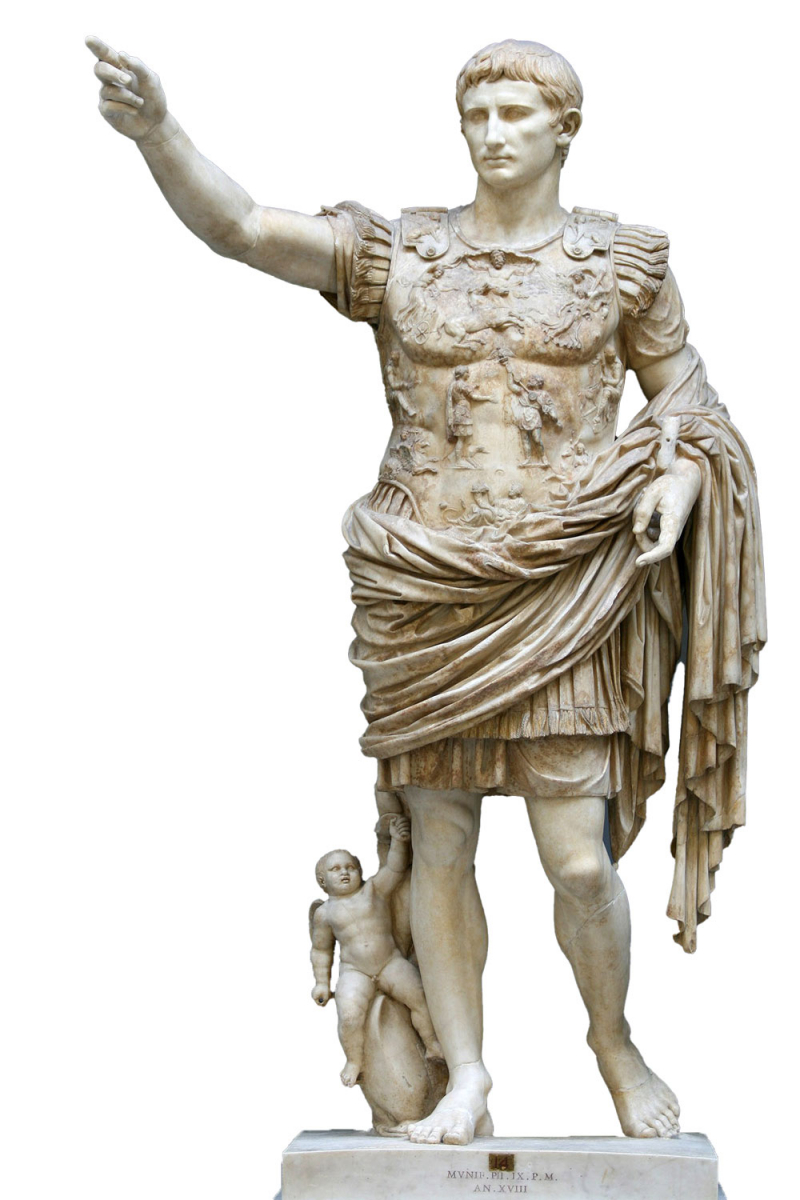
Caesar Augustus -roman-empire.net -
The Third Century Crisis, also known as Military Anarchy or the Imperial Crisis (AD 235-284), was a time in which the Roman Empire was on the verge of disintegration. It came to an end with Aurelian's military triumphs and Diocletian's ascent and the execution of reforms, including the Tetrarchy, in 284.
The crisis began in 235 when Emperor Severus Alexander was assassinated by his own forces. During the next 50 years, the Empire faced barbarian invasions and migrations into Roman territory, civil wars, peasant rebellions, and political instability, with many usurpers vying for control. This resulted in the Plague of Cyprian, financial debasement, and economic collapse. This resulted in the Plague of Cyprian, financial debasement, and economic collapse. Over time, Roman armies became more reliant on the growing influence of barbarian mercenaries known as foederati. Although nominally serving for Rome, Roman field commanders became increasingly independent.
By 268, the empire had divided into three rival states: the Gallic Empire (which included the Roman provinces of Gaul, Britannia, and, temporarily, Hispania); the Palmyrene Empire (which included the eastern provinces of Syria Palaestina and Aegyptus); and the Italian-centered Roman Empire proper.
At least 26 people claimed the title of Emperor, most of whom were notable Roman army generals who gained imperial control over all or part of the Empire. During this period, the same number of persons were approved as emperors by the Roman Senate and thus became legitimate emperors. Later, Aurelian (AD 270-275) militarily unified the empire. In 284, Diocletian and his restructuring of the Roman imperial administration brought the crisis to a conclusion. This contributed to the Empire's economic and military stability for another 150 years.
Most historians regard the crisis as defining the transition between the historical periods of classical antiquity and late antiquity because it caused such dramatic changes in the empire's institutions, society, economic life, and religion
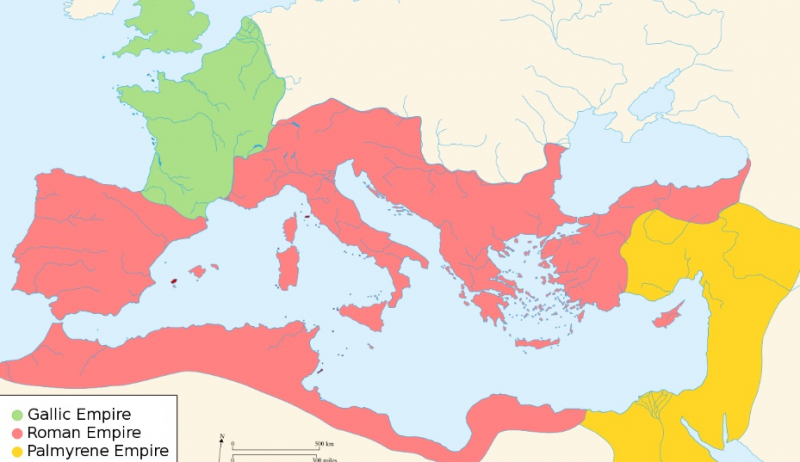
The divided Empire in 271 -en.wikipedia.org 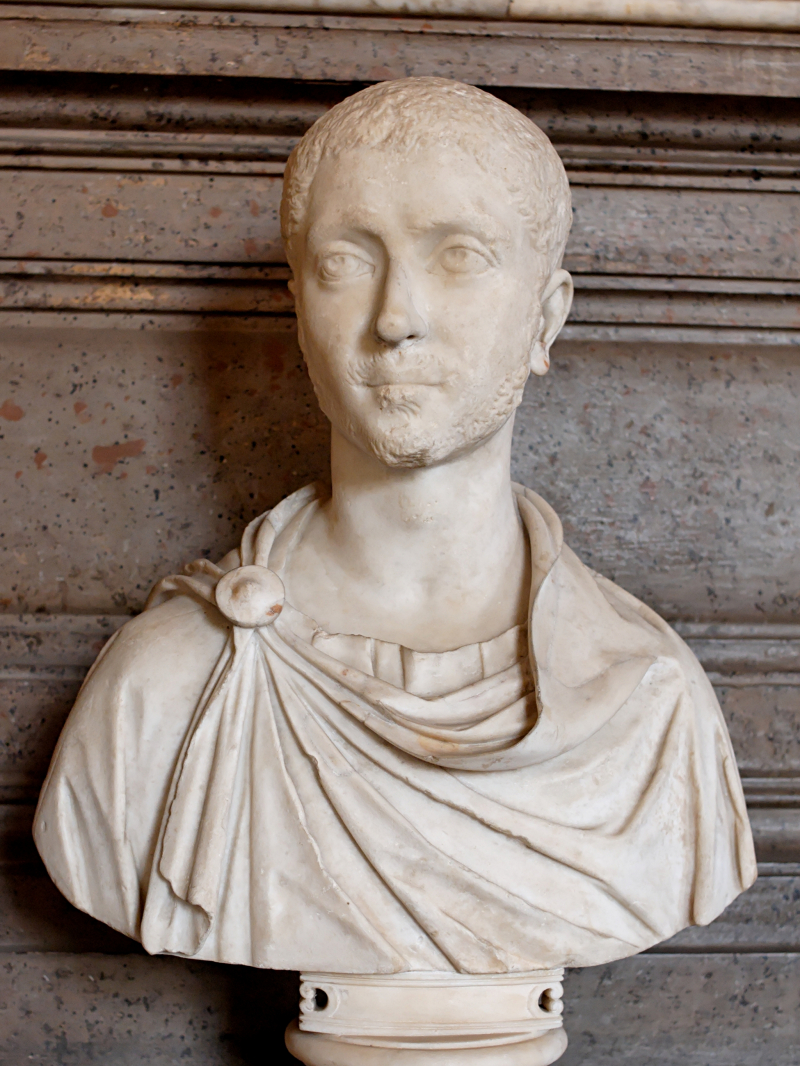
Emperor Severus Alexander -en.wikipedia.org -
Another important event in Ancient Rome is that Constantine converts to Christianity in 312. In 306, Constantine became the tetrarch of the Roman Empire. He waged numerous wars against the other tetrarchs. He first defeated Maxentius in 312. In 313, he issued the Edict of Milan, which granted Christians the freedom to practice their faith. Constantine became a Christian, thereby enforcing the Christian faith. He began the process of Christianizing the Empire and Europe, which was completed by the Catholic Church in the Middle Ages. He was beaten 306-308 by the Franks and the Alamanni. In 324, he conquered another tetrarch, Licinius, and regained control of all empires as they had been before Diocletian. To commemorate his conquests and the importance of Christianity, he rebuilt Byzantium and called it Nova Roma ("New Rome"); however, the city quickly became known as Constantinople ("City of Constantine").
Julian's reign, which strove to reestablish Classical Roman and Hellenistic religion under the influence of his adviser Mardonius, only briefly interrupted the series of Christian emperors. Constantinople served as the Empire's new capital. In truth, Rome had lost its major position since the Third Century Crisis (Mediolanum was the western city from 286 to 330, until the reign of Honorius in the 5th century, when Ravenna was named the capital). Constantine's administrative and monetary reforms, which reunited the Empire under one ruler and rebuilt Byzantium, altered the ancient world's high period.
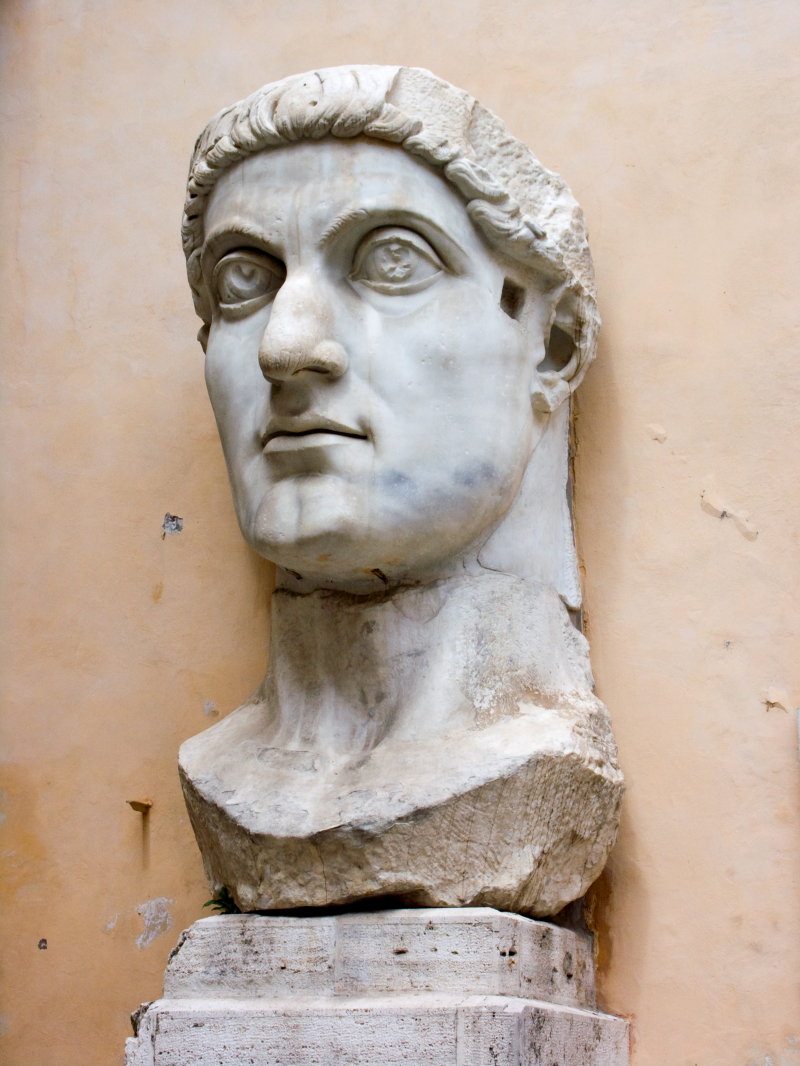
Constantine the Great - vi.wikipedia.org 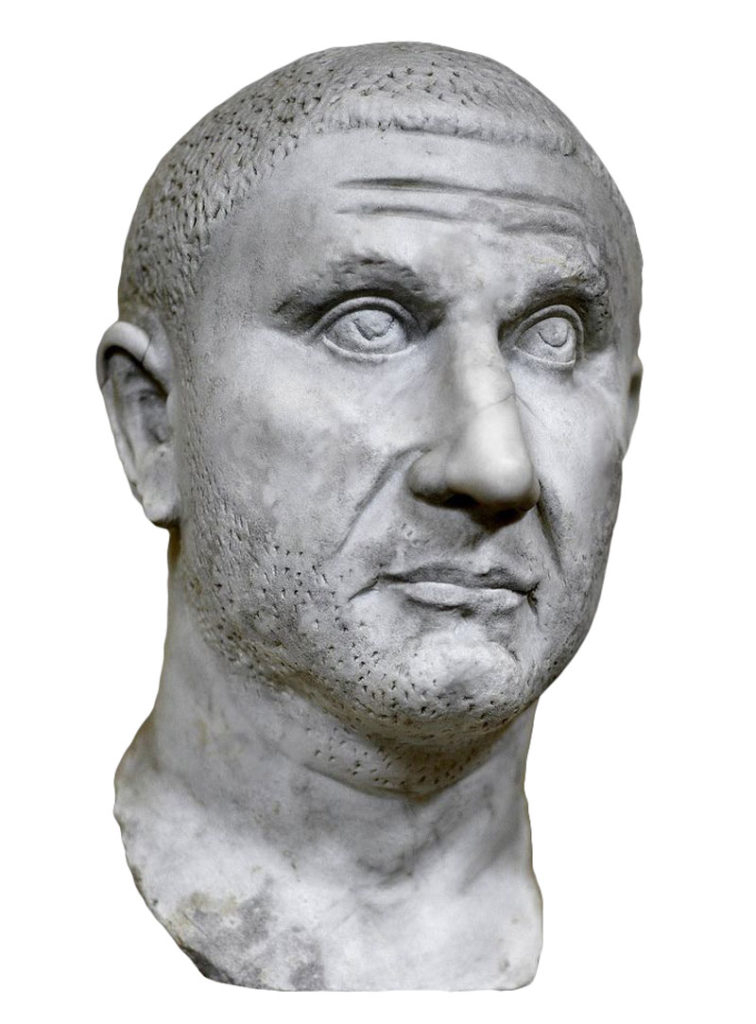
Emperor Licinius -roman-empire.net -
The fall of the Western Roman Empire (also known as the fall of the Roman Empire or the fall of Rome) was the loss of central political control in the Western Roman Empire, a process in which the Empire's vast territory was divided into several successor polities as a result of the Empire's failure to enforce its rule. The Roman Empire lost the strengths that had allowed it to exercise effective control over its Western provinces; modern historians attribute this to factors such as army effectiveness and numbers, Roman population health and numbers, economic strength, emperor competence, internal power struggles, religious changes of the period, and civil administration efficiency. Increasing pressure from invading barbarians outside of Roman culture also played a significant role in the downfall. Many of these immediate elements were influenced by climatic changes as well as endemic and pandemic diseases. The causes of the collapse are key issues of ancient world historiography, and they inform much of modern discourse on state failure.
In 376, an uncontrollable influx of Goths and other non-Romans escaping the Huns reached the Empire. After winning two catastrophic civil wars, Theodosius I died in 395, leaving a failing field army and the Empire, still troubled by Goths, divided between his two inept sons' fighting ministers. Further barbarian clans crossed the Rhine and other borders and were not destroyed, expelled, or subjugated, as the Goths were. The Western Empire's armed forces became sparse and inefficient, and despite brief recoveries under capable leaders, central power was never effectively consolidated.
By 476, the Western Roman Emperor held little military, political, or financial power, and had no effective control over the scattered Western territories that might still be regarded as Roman. Barbarian nations had established their own power across most of the Western Empire's territory. The Germanic barbarian ruler Odoacer deposed Romulus Augustulus, the last emperor of the Western Roman Empire in Italy, in 476, and the Senate transmitted the imperial insignia to the Eastern Roman Emperor Flavius Zeno.
While its legitimacy survived for centuries longer and its cultural influence is still felt today, the Western Empire was never able to rise again. The Eastern Roman or Byzantine Empire survived and, despite its diminished strength, remained an effective power in the Eastern Mediterranean for centuries.
While the loss of political unity and military power is unanimously acknowledged, the Fall is not the sole unifying notion for these events; the late antiquity period highlights the cultural continuities that existed throughout and beyond the political collapse.
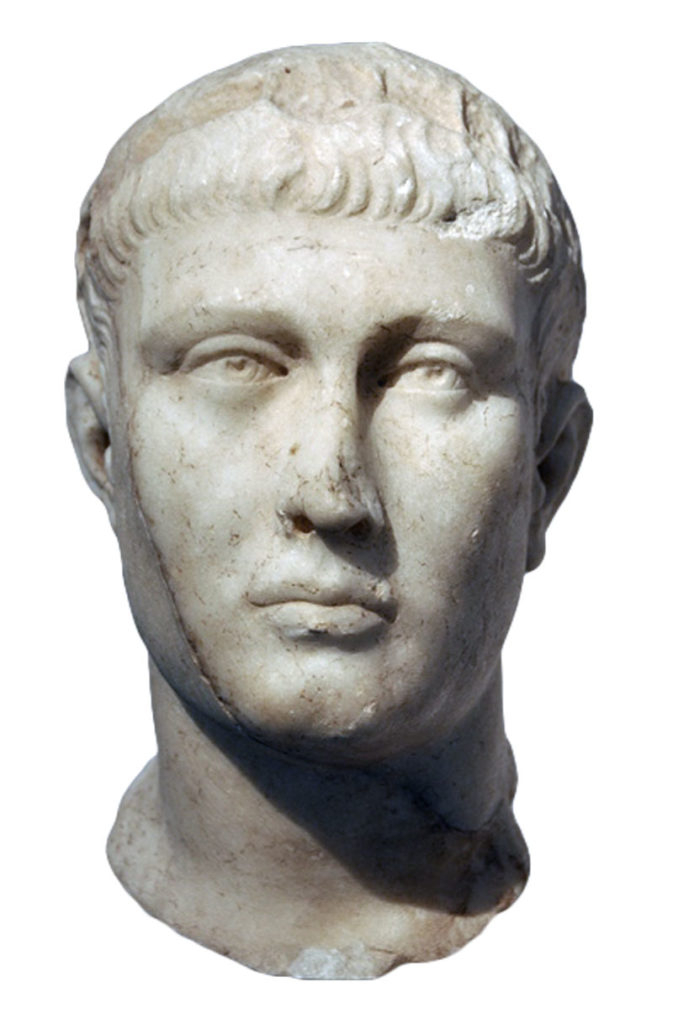
Theodosius I -roman-empire.net 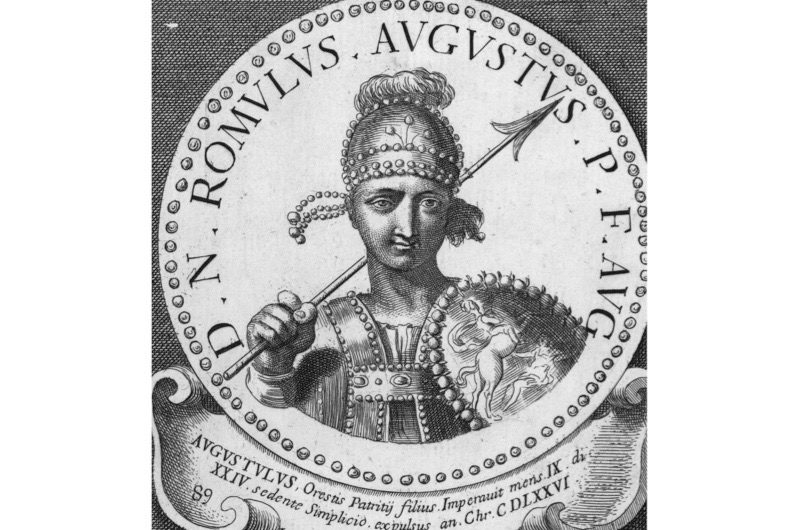
Romulus Augustulus -historyextra.com













